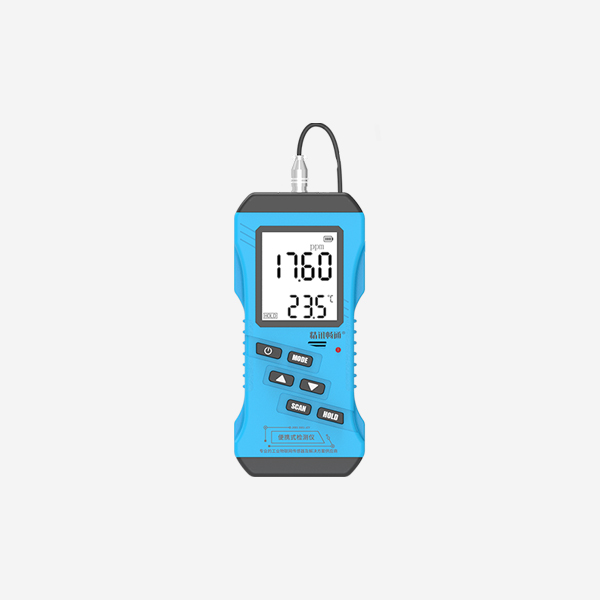Introduction: The agriculture industry is undergoing a transformation with the emergence of innovative technologies that aim to optimize crop production and ensure sustainable farming practices. One such technology that is revolutionizing agriculture is soil sensors. These sensors provide real-time data on soil conditions, allowing farmers to make informed decisions about irrigation, fertilization, and other crucial factors affecting crop growth. In this article, we will explore the significance of soil sensors in agriculture, discuss their impact on crop growth, and examine the potential benefits they offer to farmers and the environment.

Understanding Soil Sensors:
Soil sensors are devices designed to measure and monitor various parameters of the soil, such as moisture content, temperature, pH levels, and nutrient concentrations. They are typically placed at different depths within the soil profile to gather data across various layers. These sensors can be either wired or wireless, and they transmit data to a central system for analysis and interpretation.
The Importance of Soil Sensors in Agriculture:
2.1 Precision Farming: Soil sensors enable precision farming techniques by providing accurate, localized data about soil conditions. This data allows farmers to tailor their irrigation, fertilization, and pest management practices to specific areas within their fields. By optimizing resource allocation, farmers can reduce water and fertilizer usage, leading to cost savings and environmental sustainability.
2.2 Enhanced Crop Yield and Quality:
Understanding soil conditions is crucial for achieving optimal crop growth. Soil sensors help farmers determine the ideal timing and amount of irrigation and fertilization required for specific crops. With precise information about soil moisture, nutrient availability, and pH levels, farmers can create optimal growing conditions, resulting in increased crop yield and improved crop quality.
2.3 Water Conservation:
Water scarcity is a pressing concern in agriculture, making efficient water use a priority. Soil sensors play a vital role in water conservation efforts by providing real-time data on soil moisture levels. Farmers can use this information to implement targeted irrigation strategies, applying water only when and where it is needed. By avoiding over-irrigation, farmers can conserve water resources and reduce the risk of soil erosion.
2.4 Nutrient Management:
Soil sensors enable precise monitoring of nutrient levels in the soil. By measuring nutrient concentrations, farmers can determine the exact amount and type of fertilizers required for optimal crop growth. This targeted approach minimizes fertilizer wastage, reduces nutrient runoff into water bodies, and prevents the pollution of surrounding ecosystems. Additionally, improved nutrient management can lead to higher crop nutrient content, benefiting both human health and market value.
Applications and Benefits of Soil Sensors:
3.1 Irrigation Management: Soil sensors provide real-time data on soil moisture levels, allowing farmers to optimize irrigation practices. By avoiding under or over-watering, farmers can prevent water stress in crops and reduce the risk of diseases caused by excessive moisture. This precision irrigation approach improves water-use efficiency, conserves water resources, and promotes healthier plant growth.
3.2 Fertilizer Optimization:
Soil sensors help farmers determine nutrient deficiencies or excesses in the soil, enabling precise fertilizer application. By using the right type and amount of fertilizers, farmers can enhance nutrient uptake by crops, minimize environmental impact, and reduce production costs. This targeted approach also reduces the leaching of nutrients into groundwater, preventing water pollution.
3.3 Disease and Pest Management:
Soil sensors assist in disease and pest management by providing valuable insights into soil conditions that contribute to the spread of pathogens and pests. By identifying conducive environments for these organisms, farmers can take preventive measures such as adjusting irrigation schedules, implementing crop rotation, or applying targeted treatments. This proactive approach reduces the reliance on pesticides, minimizing environmental contamination and promoting sustainable farming practices.
3.4 Decision Support Systems:
Soil sensors, when integrated with data analytics and decision support systems, provide farmers with actionable insights and recommendations. These systems analyze soil sensor data, historical weather patterns, crop growth models, and other relevant factors to generate customized recommendations for farmers. By leveraging these insights, farmers can make informed decisions regarding planting schedules, crop selection, and resource allocation, maximizing productivity and profitability.
Future Prospects and Challenges:
The future of soil sensor technology holds immense potential for further revolutionizing agriculture. Ongoing advancements in sensor accuracy, durability, and affordability are making soil sensors more accessible to farmers worldwide. Additionally, the integration of soil sensors with other emerging technologies like artificial intelligence and machine learning will enhance data analysis capabilities and improve predictive models, enabling farmers to make even more precise and informed decisions.

However, challenges remain in terms of sensor calibration, standardization, and data interpretation. Ensuring consistent and accurate measurements across different soils and environments is a complex task. Further research and development efforts are needed to address these challenges and refine soil sensor technology for widespread adoption.
Conclusion: Soil sensors are revolutionizing agriculture by providing real-time data on soil conditions, enabling precision farming practices, and optimizing resource management. By facilitating precise irrigation, fertilizer optimization, and disease management, soil sensors contribute to increased crop yield, improved crop quality, and reduced environmental impact. As technology continues to advance, soil sensors will play an increasingly vital role in sustainable agriculture, ensuring food security and promoting environmental stewardship in the years to come.
